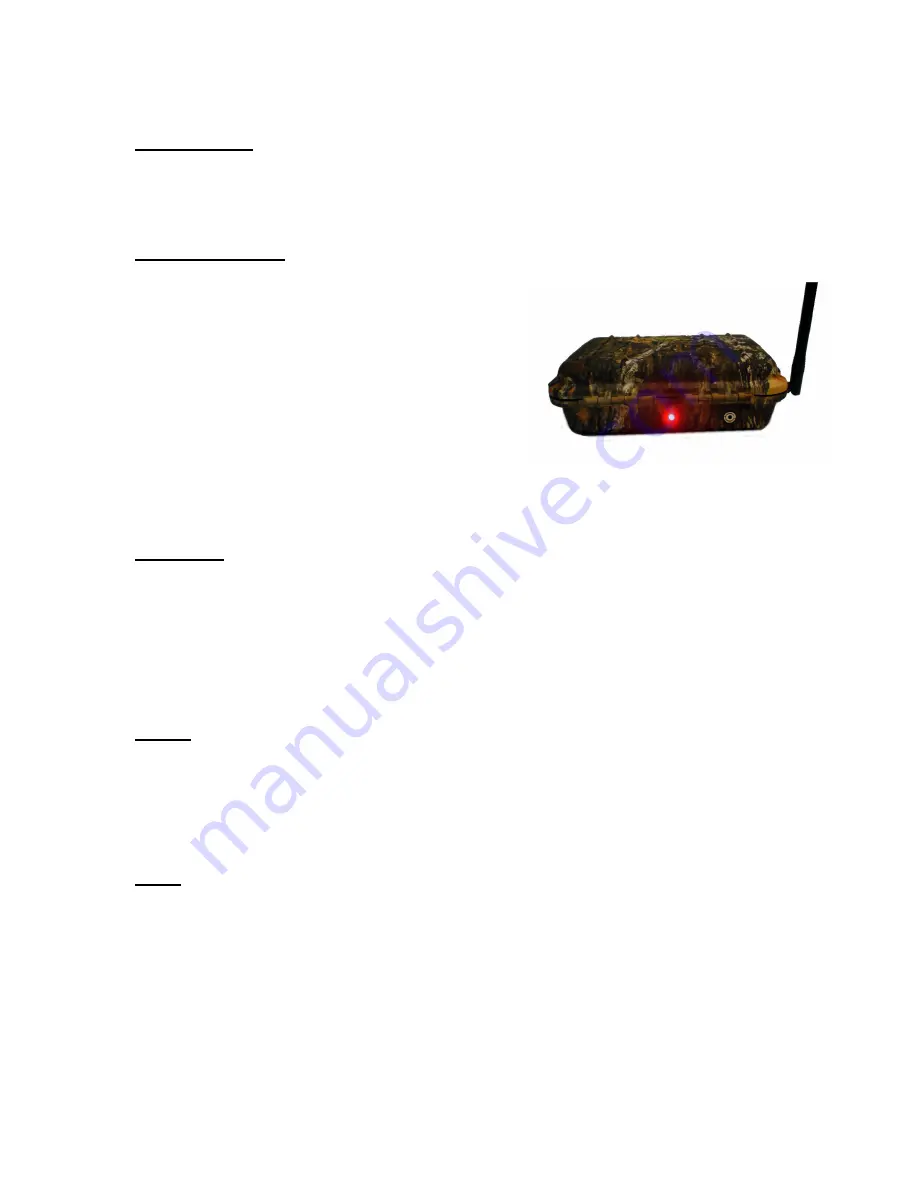
8
VideoEye™ units respond to SlimFire or X10 Wireless PIR motion sensors. For this you have the
ability to set the address between each of these devices. It is a good idea to use a marking pen
and write the address code on your SlimFire remote or X10 Wireless PIR motion sensor if not set
in the default “A” address code.
Zoom Control
Switch 4 controls the zoom of the camcorder. If this mode is turned on you can control the zoom
feature of your camcorder, however, we suggest that your camcorder is close enough so you can
view the camcorder LCD display screen.
Super Bright LED
Switch 5 controls the LED. This controls the LED
display. In most cases you would like to know if your
Remote VideoEye™ receives the wireless
commands. When the LED is turned on it will light up
upon the “On” command from your SlimFire remote
or X10 Wireless PIR motion sensor.
The default mode is in the “on” position.
Recording LED indicator can be seen from 200+
feet on the Remote VideoEye™ when recording.
Test Mode
Switch 6 controls Test Mode. When Test Mode is set to “On” it will let you test out the “line of
sight” distance between the triggering unit, i.e., the SlimFire remote control and the Remote
VideoEye™ unit. This is useful to be sure the camcorder units can see commands from the
triggering units.
Note:
To put the Remote VideoEye back into “recording mode” when using Test Mode.
Sound
Switch 7 will let you control the sound indication. On the Remote VideoEye™ controller is a small
speaker that can send out sound commands. The default mode is having this turned off, but there
may be times when you would like a sound indication your unit is receiving the wireless
commands.
Note:
When changing switch setting you must re-boot your Remote VideoEye. When re-booting
you must wait approximately 30 seconds before turning power on again. Not doing so can
result in the controller not working properly. Please disconnect the LANC cable when
changing settings.




























